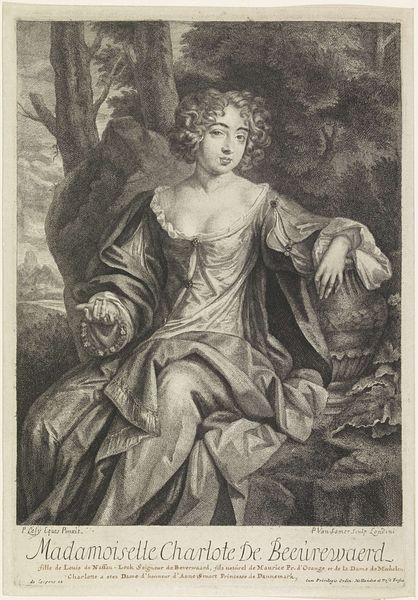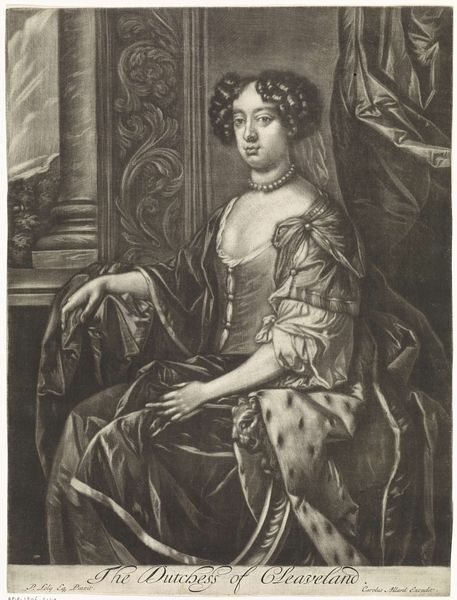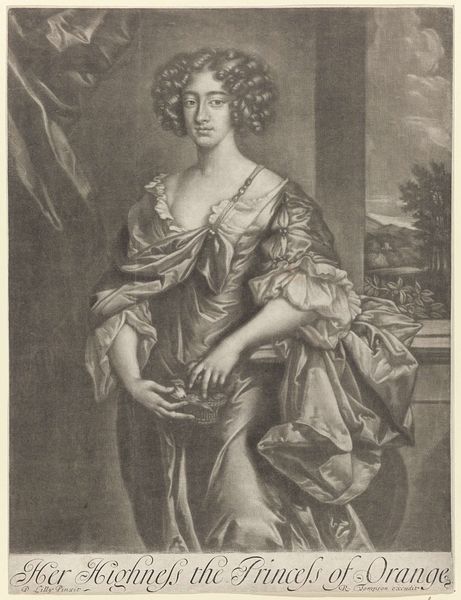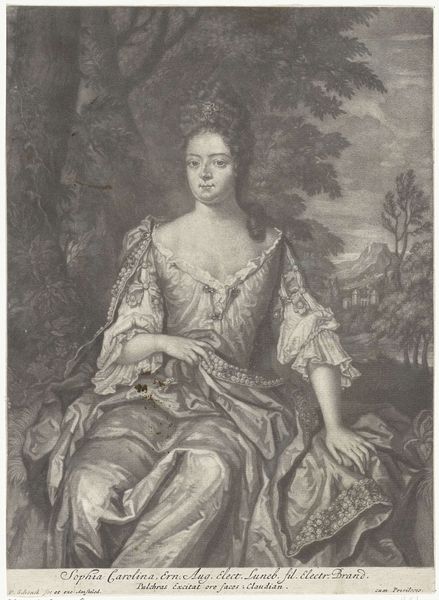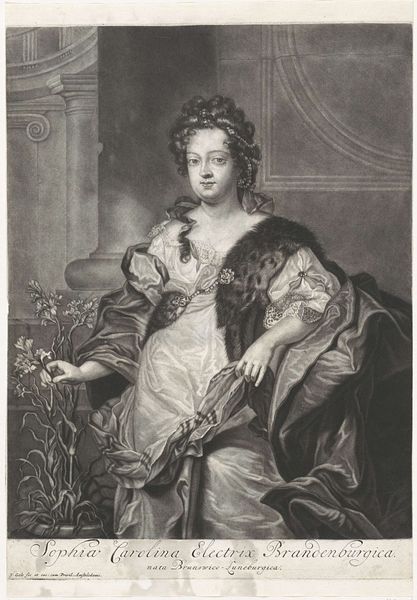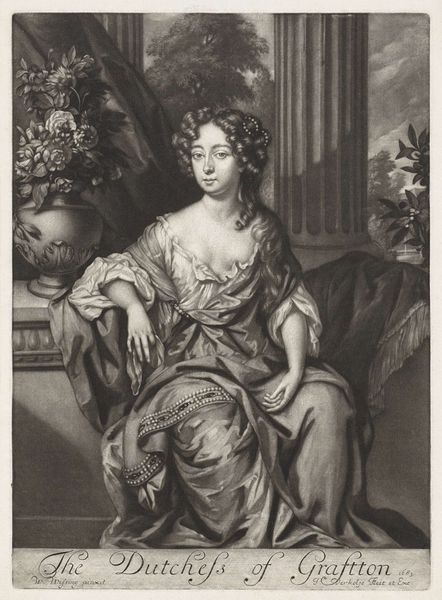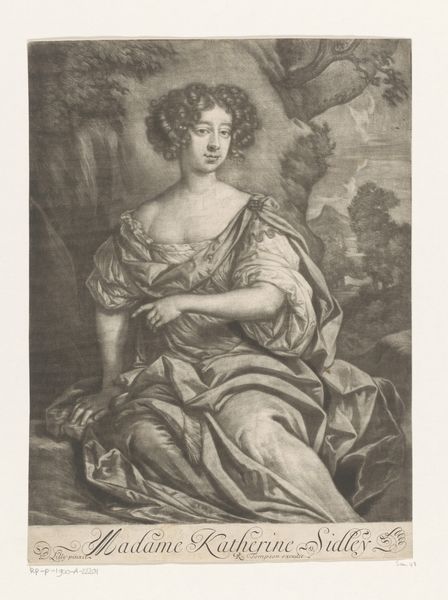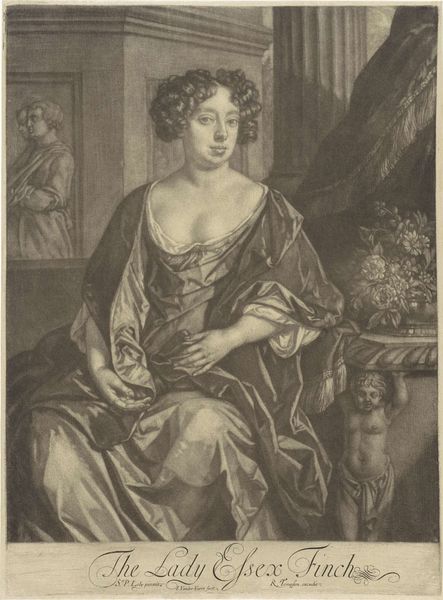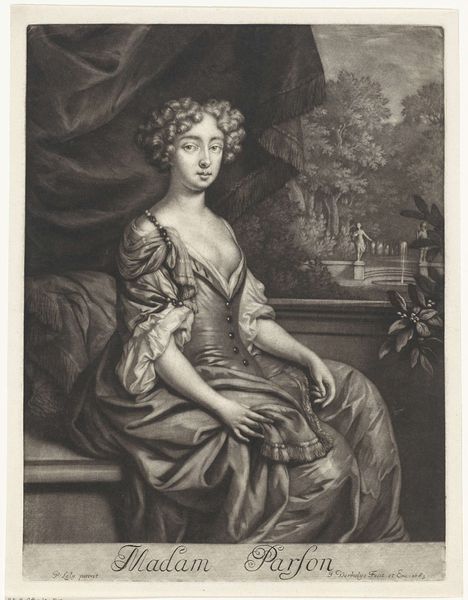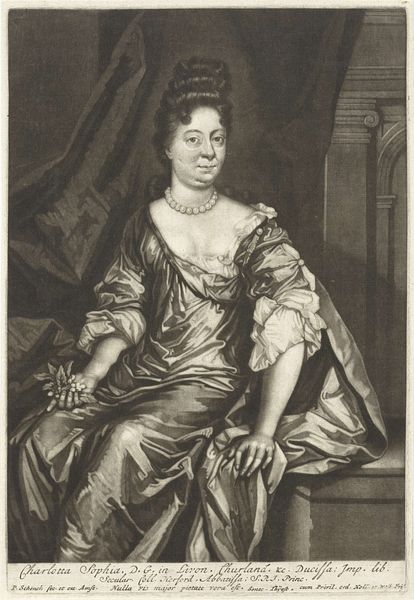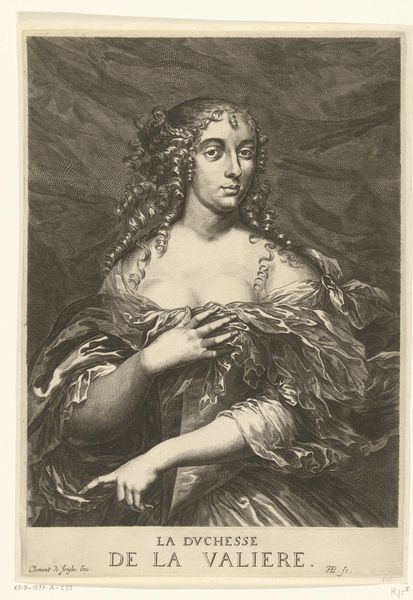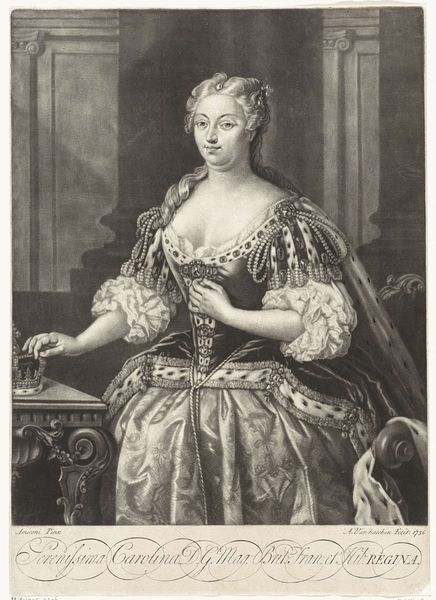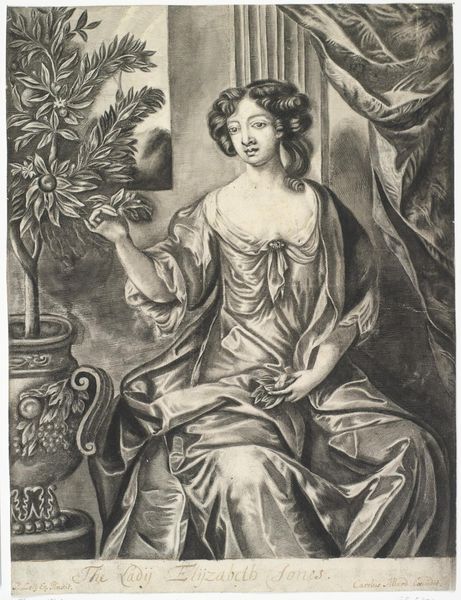
Portret van Louise Françoise de La Baume Le Blanc de la Vallière 1670 - 1713
0:00
0:00
pieterschenk
Rijksmuseum
print, etching, engraving
#
portrait
#
woman
#
baroque
# print
#
etching
#
engraving
Dimensions: height 334 mm, width 145 mm
Copyright: Rijks Museum: Open Domain
Curator: Pieter Schenk produced this print, combining etching and engraving techniques, depicting Louise Françoise de La Baume Le Blanc de la Vallière sometime between 1670 and 1713. It now resides in the Rijksmuseum. Editor: It’s striking how the subject’s elaborate dress fills the visual field, creating this sense of opulence within a contained space, almost claustrophobic. The contrast of dark and light gives it a dramatic Baroque flair. Curator: Indeed, the textures are key. Consider how Schenk uses varied line work in the etching and engraving process to delineate silk versus skin, the softness of the feathers of the bird versus the density of the foliage. This demonstrates incredible skill with these historically vital printmaking methods, which allowed images and information to circulate through different strata of society. Editor: Precisely, and the formal choices serve to highlight social status through a visual vocabulary of the era: a pampered pet, fashionable hairstyle and clothing, pearls... This is definitely intended to present her in a very specific light. Look how her direct gaze draws us into her personal space, establishing a relationship with the viewer. Curator: Let's not overlook how printed portraits like these were disseminated. The materiality of this piece is significant; paper production, the engraver’s labor, the economic transaction of its sale... these details shaped its reception and function. And it must be noted she was a mistress to Louis XIV; the portrait served purposes that go beyond simple representation, embodying her relationship to power. Editor: That context definitely informs how we read it, it can almost been seen as an allegory for control of nature by an individual, the woman or maybe her sponsor. It highlights themes of privilege and artificiality prevalent in Baroque portraiture through its carefully constructed visual language. The delicate detail in the bird and dress act as reminders of power and wealth. Curator: Viewing this, then, allows us to appreciate Schenk’s technical achievements in rendering material distinctions while reminding us of the intricate web of social and economic relationships embedded in the very creation of the work. Editor: Absolutely; seeing this through both a structural lens and understanding its purpose provides a more complex idea of society in that period.
Comments
No comments
Be the first to comment and join the conversation on the ultimate creative platform.

